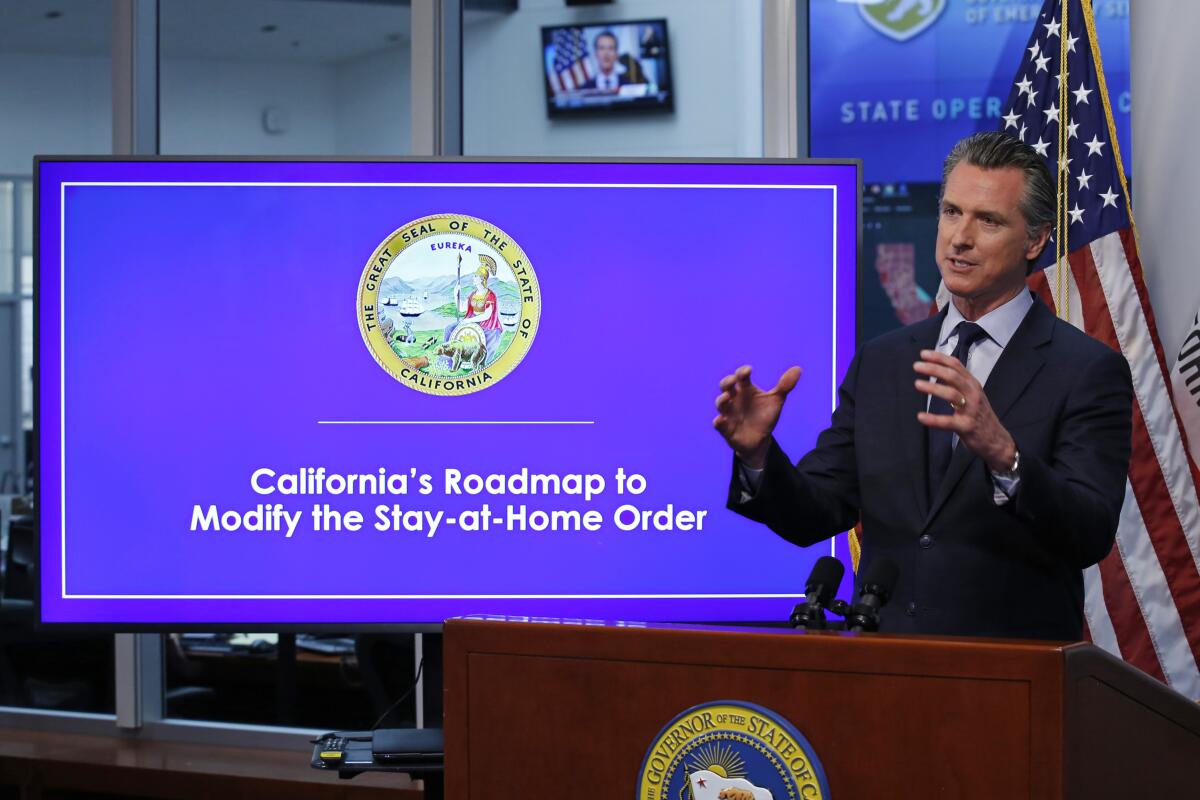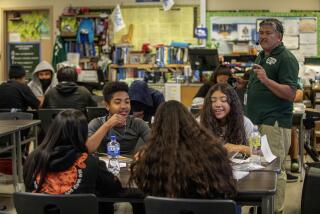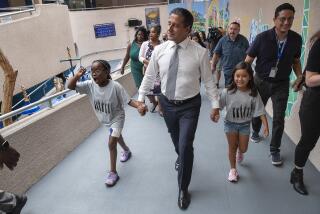Less beach time for kids and more school this summer? Sounds like a plan

- Share via
Gov. Gavin Newsom thought out loud Tuesday about opening schools in late July or early August — if it’s safe to do so by then, of course — in an attempt to make up some of the learning loss occurring in these days of remote learning.
I can practically hear the screams already. How can we take away more of our kids’ precious summer days at the beach? We’ve already messed up most of their springtime and who knows how long it will go on?
The only problem with those arguments is that if we care about educating students, they need to go to school. If it were feasible, starting even earlier would be better. In fact, we might be able to do more than make up for lost learning; the state could discover what a longer school year might look like and whether it might be a useful component to future, more normal school years.
Sure, some kids have teachers who are so on top of online instruction, and parents and homes that are in such a good position to support that, they’re barely skipping a beat in their academic progress. Those are the kids for whom all the stars align. But the heavens aren’t set up so tidily for most California students. Close to half were in low-income families before the novel coronavirus sent most of us scurrying behind closed doors; those numbers have increased now that many workers have been furloughed or lost their jobs altogether. Not all homes have a quiet place for learning and parents who have the educational background to help.
Even among the middle class, many students have teachers who struggle with online teaching or who are unwilling or unable to deliver a sound education through unfamiliar means. Parents who were lucky enough to hang on to their jobs have to work while trying to oversee at-home studies. Other parents find that during this period of upheaval, kids have trouble concentrating. Stress and fear are changing family life.
For most students, especially younger ones, online lessons don’t bring about the progress or depth of learning that the classroom does. That’s not even counting the benefit of having rooms designed for learning, playgrounds or playing fields right at hand, and a teacher who can see from the students’ eyes or uncomfortable posture that they’re not getting the lesson. And if the economy is reopened and parents are heading back to workplaces, this would provide some of the childcare they will need.
Los Angeles Unified School District already was planning online summer school for students to get extra instructional time; it’s unclear how these plans would mesh with Newsom’s. And if the learning is taking place in shifts to create more social distancing at school, parents could be in a tough spot for getting their kids to and from school at the necessary times or finding childcare. We have to start somewhere, though, and if the summer ends up being a big rehearsal for making the traditional school year work better, that’s not a bad outcome either.
If there’s one thing we’ve learned from the pandemic, it’s the need to be nimble and flexible, to do what it takes to cover basic needs, and to adjust to constantly changing information.
A lot of Newsom’s semiplan will depend on how the various unions see this and how much it will cost. Teachers, janitors, aides and school nurses would need to be paid for extra weeks of work, if they agree to return to campus at all during that time. But if we manage to pull it together, we also could see whether a longer school year would indeed improve learning; whether a couple weeks fewer at the beach is as big a deal as it seems; and whether shorter holidays would result in less learning loss, less need to go over the same old material in the fall. And we would also see that we could find ways to pay for a longer school year, if it proved its worth.
That’s not to be prescriptive. True, a lot of countries with longer school years outrank the United States educationally, but so does Finland, which has just six more days of schooling and a significantly shorter school day with a long summer vacation like ours. Chances are that our nation’s high rate of child poverty has more to do with lower performance than its school calendar, and that’s something we cannot afford to leave unfixed.
The pandemic has been a nightmare, but it also has given us a stark look at everything, from our socioeconomic divide to our educational divide. It’s shown us that when we really need to do something drastic, we have it within ourselves to accomplish it. We shouldn’t be afraid of cutting a few vacation days out of our kids’ lives and seeing what a boost some summer learning might bring.
More to Read
A cure for the common opinion
Get thought-provoking perspectives with our weekly newsletter.
You may occasionally receive promotional content from the Los Angeles Times.










